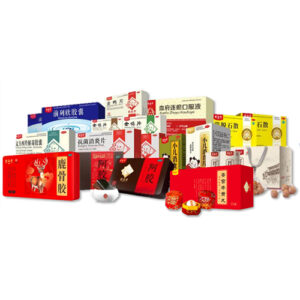How do OEM solutions contribute to cost savings and efficiency in manufacturing and production processes?
OEM (Original Equipment Manufacturer) solutions can contribute to cost savings and increased efficiency in manufacturing and production processes in several ways:
Customization for Specific Needs: OEM solutions are designed and manufactured to meet the specific requirements of the purchasing company. This means that the components or products are tailored to fit seamlessly into the existing production process, reducing the need for costly modifications or adaptations.
Economies of Scale: OEM manufacturers often produce components or products in bulk, taking advantage of economies of scale. This can result in lower per-unit costs, which benefits the purchasing company in terms of cost savings.
Quality and Consistency: Established OEM manufacturers are experienced in producing high-quality components. Using OEM solutions can lead to greater consistency and reliability in the manufacturing process, reducing defects, rework, and quality control expenses.
Reduced Research and Development Costs: By leveraging OEM solutions, companies can avoid the significant costs and time associated with in-house research and development. OEM solutions are already developed and tested, reducing the need for costly R&D efforts.
Shorter Time-to-Market: OEM solutions are typically readily available, which can help companies get their products to market more quickly. This accelerated time-to-market can be a significant advantage in competitive industries.
Expertise and Specialization: OEM manufacturers are experts in their field, and they specialize in producing specific components or products. This specialization often leads to increased production efficiency and reduced production costs compared to in-house manufacturing.
Lower Maintenance Costs: OEM components are often designed with a focus on durability and ease of maintenance, which can reduce long-term maintenance and repair expenses in manufacturing facilities.
Scalability: OEM solutions can be scaled up or down to match the production requirements of a company. This flexibility allows for cost-effective adjustments to production levels as demand fluctuates.
Supplier Relationships: Building long-term relationships with reliable OEM suppliers can result in negotiated cost savings and more favorable terms over time.
Reduced Administrative Burden: Outsourcing to OEM suppliers can reduce the administrative overhead associated with in-house manufacturing, including personnel management and regulatory compliance.
Faster Integration: OEM solutions are often designed to integrate seamlessly with the existing production systems and machinery, which minimizes downtime and streamlines the production process.
Risk Mitigation: OEM solutions can help companies mitigate risks associated with manufacturing, such as technology obsolescence, production disruptions, and supply chain vulnerabilities.
In summary, OEM solutions offer the potential for cost savings and efficiency improvements by providing customized, high-quality components or products, streamlining production processes, and reducing the need for in-house development and manufacturing efforts. However, it’s essential to choose reputable and experienced OEM suppliers to realize these benefits fully.
How do companies typically go about customizing or branding OEM solutions to meet their specific needs?
Companies can customize and brand OEM (Original Equipment Manufacturer) solutions to meet their specific needs through a series of steps and considerations:
Define Requirements: The first step is to clearly define the specific requirements, performance criteria, and any unique features or functions needed for the OEM solution to integrate seamlessly into the company’s product or system.
Select the Right OEM Partner: Choose an OEM partner with a proven track record in producing the type of components or products required. Evaluate potential partners based on their capabilities, expertise, quality standards, and willingness to collaborate on customization.
Collaborative Design: Work closely with the OEM partner to design the customized solution. This may involve modifying existing designs or developing entirely new ones. Provide detailed specifications and technical drawings as needed.
Materials and Manufacturing Processes: Discuss material choices and manufacturing processes with the OEM partner. Consider factors like material durability, cost-effectiveness, and compliance with industry standards and regulations.
Quality Assurance: Establish quality control measures to ensure the customized OEM solution meets performance and reliability requirements. This may include inspections, testing, and certifications.
Branding and Packaging: Determine how the OEM solution will be branded and packaged to align with the company’s image and product line. Custom labels, logos, and packaging materials can be designed to reflect the company’s brand.
Documentation and Manuals: Create user manuals or documentation that includes information specific to the customized OEM solution, such as installation instructions, maintenance procedures, and troubleshooting guides.
Regulatory Compliance: Ensure that the customized solution complies with relevant industry standards, safety regulations, and certifications. China OEM Solutions supplier This may require working with regulatory bodies to obtain approvals.
Prototyping and Testing: Depending on the complexity of the customization, consider prototyping and testing to validate the performance and functionality of the customized OEM solution before full-scale production.
Cost Analysis: Analyze the cost implications of customization. Determine whether the added costs of customization align with the benefits, such as improved product fit, quality, and marketability.
Supply Chain Integration: Plan for a seamless integration of the customized OEM solution into the company’s supply chain. Ensure that the production and delivery schedules align with the company’s production needs.
Training and Support: Train employees who will be working with or installing the customized OEM solutions. Provide customer support resources to assist end-users with any questions or issues.
Long-Term Relationship: Maintain open communication and a strong relationship with the OEM partner. Regularly review performance and quality to ensure ongoing satisfaction and to address any necessary improvements.
Continuous Improvement: Continuously assess the performance and cost-effectiveness of the customized OEM solution and look for opportunities to optimize or enhance it over time.
Customizing and branding OEM solutions is a collaborative process that requires effective communication and close cooperation between the company and the OEM partner. This approach allows companies to tailor the solutions to their specific needs while maintaining quality and compliance with industry standards.
